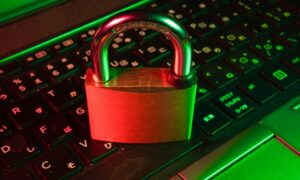In an era marked by rapid advancements in cyber threats, safeguarding our digital identities has become an imperative concern. With hackers perpetually devising novel techniques to breach security protocols, relying solely on passwords for shielding sensitive information has become inadequate. This is where the prominence of multi-factor authentication (MFA) arises, acting as a shield of invulnerability in the realm of online security. By introducing an additional layer of defense beyond traditional passwords, MFA is instigating a transformative shift in our approach to thwarting cyberattacks. This discourse delves into the ascent of multi-factor authentication, underscoring the pivotal reasons why the integration of this state-of-the-art technology into our digital lives is of paramount importance in today’s increasingly interconnected world.
Introduction
Understanding Multi-factor Authentication
Multi-factor authentication is a verification procedure that necessitates the utilization of multiple factors to authenticate a user’s identity. Predominantly, two-factor authentication (2FA) is the most widespread manifestation of multi-factor authentication, compelling users to authenticate their identity using two distinct factors.
The initial factor typically involves something known only to the user, such as a password or a personal identification number (PIN). The subsequent factor centers around something owned by the user, often a mobile device or a security token. The amalgamation of these factors substantially heightens the complexity of a potential breach, thwarting unauthorized access attempts to a user’s account.
Biometric factors like fingerprints or iris scans further reinforce multi-factor authentication by offering additional layers of security. These biometric factors are intricate to impersonate, rendering it exceedingly difficult for malicious actors to replicate these credentials.
Why Multi-factor Authentication Holds Significance
As our world immerses further into the digital realm, the associated security threats expand proportionally. Hackers ingeniously devise methods to infiltrate systems, employing techniques like phishing and malware. Consequently, having robust security measures in place is imperative.
Multi-factor authentication (MFA) emerges as one of the most effective strategies to shield your data. By imposing the requirement for two or more types of evidence before granting access, MFA erects a formidable obstacle against potential hackers. Their endeavor to breach an account is no longer contingent solely upon deciphering a password; they must also possess supplementary information, such as a code from a registered device.
MFA offers several advantages:
Enhanced Security: MFA substantially heightens the impediments faced by hackers striving to breach accounts.
Elevated User Experience: MFA can streamline the user experience by replacing multiple passwords with a single sign-on (SSO) solution integrated with MFA.
Cost Efficiency: MFA mitigates the risk of data breaches, potentially saving organizations from substantial expenses linked to recovery and damages.
Given the escalating risks in the digital era, embracing multi-factor authentication is pivotal. By doing so, you effectively fortify your data against malevolent attacks, ensuring that solely authorized individuals access your accounts.
Diverse Facets of Multi-factor Authentication
Multi-factor authentication (MFA) is a comprehensive authentication method that mandates users to present two or more factors to gain access, guaranteeing a higher level of security.
Two-factor authentication (2FA) is a prevalent MFA variant, blending something the user knows (like a password) with something the user possesses (like a fingerprint or a one-time code). The breadth of MFA extends beyond 2FA, encompassing various factor combinations.
A factor can be intrinsic, such as biometrics (e.g., fingerprints or iris scans), or possession-based, such as a smartphone with a one-time code generator app. Another factor may encompass knowledge, like a personal identification number (PIN) or a password.
The beauty of MFA lies in its resilience. Even if one factor is compromised, another factor must still be breached, rendering unauthorized access substantially more challenging.
Organizations are increasingly adopting MFA to bolster their defense mechanisms. Recent statistics from Microsoft reveal that 67% of organizations employ MFA for some user segments.
A plethora of MFA types are at organizations’ disposal, including:
- Two-Factor Authentication (2FA)
- One-Time Password (OTP)
- Biometric Authentication (Fingerprint, Iris Scan, etc.)
- SMS-Based Authentication
- Token-Based Authentication
- Voice Authentication
- USB Key Authentication
- Push Notifications
Upsides of Enforcing MFA
Multi-factor authentication (MFA) is gaining traction as a pivotal security measure, augmenting user account protection. By mandating the provision of multiple identifying elements, MFA forms a robust barrier against unauthorized access to sensitive data.
Benefits of MFA implementation include:
Augmented Security: MFA thwarts unauthorized access more effectively by compelling multiple forms of identification.
Regulatory Compliance: Numerous regulatory bodies necessitate MFA usage for specific data categories. Incorporating MFA aids organizations in complying with such stipulations.
Enhanced Convenience: Modern MFA solutions offer diverse authentication methods, empowering users to opt for the most convenient approach. Integration with existing applications further refines the user experience.
Elevated User Experience: An adept MFA system balances security and convenience, optimizing user interaction while upholding robust security standards.
Challenges in MFA Implementation
Multi-factor authentication (MFA) is an invaluable security component, but its adoption isn’t without hurdles.
Setting up and managing MFA can be intricate, especially when multiple authentication methods are employed. MFA might disrupt user experiences, necessitating additional input or steps during login. Moreover, attackers can bypass MFA by compromising the requisite user information, such as stealing their phone.
However, MFA remains indispensable in safeguarding data and accounts from unwarranted access. Considerations include potential hardware or software investments, which might impede smaller organizations constrained by budgetary limitations.
Executing Multi-factor Authentication
The adoption of multi-factor authentication (MFA) mandates a comprehensive grasp of its mechanics and benefits. MFA amalgamates distinct credentials to confirm a user’s identity, fortifying security before granting access to sensitive information.
Two-factor authentication (2FA) represents the most prevalent MFA paradigm, entailing a dual authentication process – something known (password) and something possessed (hardware token or smartphone). This layered approach minimizes vulnerability compared to solitary passwords.
Organizations can opt to enforce MFA universally or selectively for specific user groups like administrators. While MFA integration might present challenges, abundant resources facilitate implementation.
Multi-factor authentication serves as a bulwark against fraud and threats, safeguarding businesses and clientele. Mastery of MFA’s principles and proper implementation ensures optimal data security.
Conclusion
This exposition sheds light on the ascendancy of multi-factor authentication and its pivotal role in data security. It elucidates the apt choice of MFA type and provides insights into its seamless integration. Multi-factor authentication emerges as an indispensable component of a comprehensive security strategy, bolstering defenses against cyber threats. By embracing contemporary and potent methodologies like MFA, you guarantee the sanctity of your data against the machinations of malevolent actors.



































